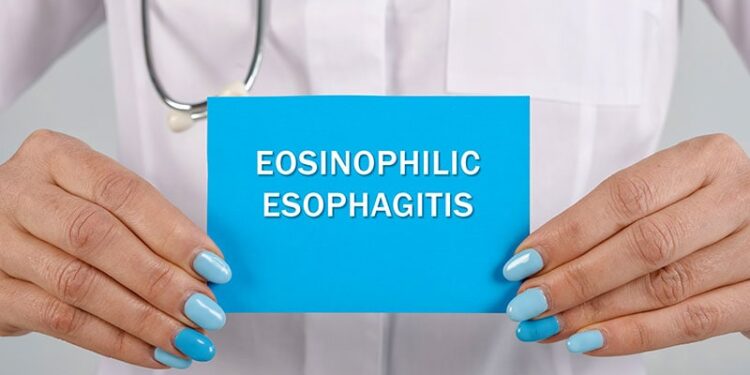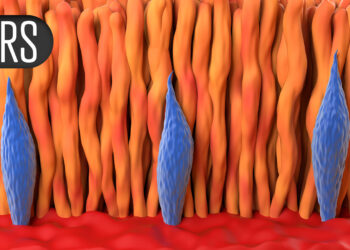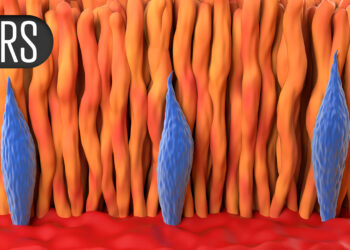TOPLINE:
Etrasimod, a once-daily oral selective sphingosine-1-phosphate receptor modulator, is well tolerated and effective in treating eosinophilic esophagitis (EoE), demonstrating sustained histologic and endoscopic improvements over 52 weeks.
METHODOLOGY:
- Etrasimod, currently approved in adults with moderate to severe ulcerative colitis, blocks lymphocyte trafficking to inflamed mucosal tissues and may offer a promising option for treating EoE.
- Researchers conducted an international phase 2 multicenter trial to assess the efficacy and safety of etrasimod vs placebo in patients (age, 18-65 years) with previously diagnosed and histologically active EoE.
- Patients were randomized to receive oral 1 mg etrasimod, 2 mg etrasimod, or placebo once daily for 24 weeks, with stratification according by history of dilation and concurrent proton pump inhibitor therapy.
- Patients who completed the initial treatment phase entered a 28-week extension period, during which they either continued their etrasimod dose or were randomly switched from placebo to 1 or 2 mg etrasimod.
- The primary endpoint was a percentage change in the esophageal peak eosinophil count from baseline to week 16; safety was assessed through week 52.
TAKEAWAY:
- Researchers randomized 108 patients: 41 to receive 2 mg etrasimod, 39 to receive 1 mg etrasimod, and 28 to receive placebo; 85 patients completed the double-blind period and entered the extension period.
- At week 16, only etrasimod 2 mg significantly reduced peak eosinophil count from baseline vs placebo (P = .010); however, at week 24, both 1 and 2 mg doses showed significant reductions (P = .0022 and P < .0001, respectively).
- Endoscopic and histologic severity scores improved with 2 mg etrasimod and both doses, respectively, at week 24, with benefits sustained through week 52.
- Significant improvements in Dysphagia Symptom Questionnaire scores were noted at week 24 in patients without prior endoscopic dilation compared with patients receiving placebo.
- Gastrointestinal disorders were the most common treatment-emergent adverse events, occurring in 27% (2 mg), 33% (1 mg), and 50% (placebo). Three cases of mild or moderate bradycardia were reported.
IN PRACTICE:
“Etrasimod offers a promising new therapeutic approach for eosinophilic oesophagitis, addressing the complexities of [type 2 helper T cells]–driven inflammation and the challenges posed by preexisting fibrotic changes,” an expert wrote in an accompanying editorial. “Etrasimod’s simple administration, independent of meals, could potentially increase patient compliance.”
SOURCE:
The study was led by Evan S. Dellon, MD, Division of Gastroenterology and Hepatology, Department of Medicine, University of North Carolina School of Medicine in Chapel Hill. It was published online in The Lancet Gastroenterology & Hepatology.
LIMITATIONS:
This study was not powered to assess dysphagia symptoms. It included a high proportion of patients with stenosis and prior dilation and few with atopic conditions, relative to other reported EoE studies. The extension phase involved a limited number of patients.
DISCLOSURES:
This study was funded by Pfizer. Nine authors declared being current or former employees of Pfizer and holding stock or stock options. Several others reported receiving grants, honoraria, fees, or travel support from, holding stocks of, or having other ties with Pfizer and other pharmaceutical companies.
This article was created using several editorial tools, including AI, as part of the process. Human editors reviewed this content before publication.
Source link : https://www.medscape.com/viewarticle/etrasimod-shows-promise-eosinophilic-esophagitis-2025a1000daz?src=rss
Author :
Publish date : 2025-05-27 11:50:00
Copyright for syndicated content belongs to the linked Source.














